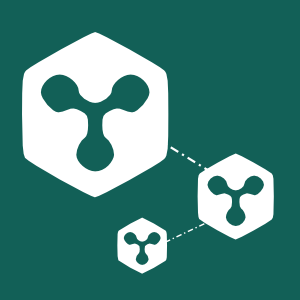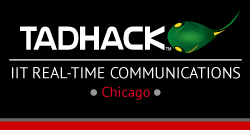In addition to the Android release a couple of days ago, we also released a new version of Matrix Console iOS: v0.5.6!
This release includes a new version of MatrixKit (v0.2.7) that you can take advantage of in your MatrixKit powered app. There are several changes in MatrixKit since the last release, including improved performance, better handling of unrecognized certificates and fixes of reported crash issues. We have also introduced read receipts, improved the chat history display, made room invites more obvious, and fixed a whole lot of JIRA issues.
You can find the full list of changes in the MatrixKit CHANGES.rst and the Matrix Console iOS CHANGES.rst files.
The Android Matrix Console app v0.5.2 is currently in the queue to go live on the Play store!
This release includes:
- Read receipts!
- Call ring volume is now based on device ring volume
- Accessibility tweaks from Peter Vágner - thanks!
- Better SSL support for older devices
- We fixed an echo problem in Android{'<->'}Android VOIP calls
- A ringback tone for placing outbound calls was added
- Lots of small improvements, e.g. better recent message display and add account dialog
- Fixed several reported issues/crashes - for the full list look at the CHANGES files in the console and SDK projects
Get it RSN from the Google play store!
Enjoy! And please do let us know your feedback in #matrix:matrix.org!
Today, we are releasing Synapse version 0.11.0. In the last week, we have had two release candidates, and this release also includes changes in v0.10.1-rc1 from October.
New features include a new Search API and better options for logging in (CAS and login fallback support) - thanks to Steven for contributing CAS support. We also introduce room tagging and as usual, there are plenty of improvements and fixes. For the full info, see the changelog below.
To upgrade, go read https://github.com/matrix-org/synapse/blob/master/UPGRADE.rst - to install for the first time, go to https://github.com/matrix-org/synapse/blob/master/README.rst.
Changes in synapse v0.11.0 (2015-11-17)
=======================================
- Change CAS login API (PR #349)
🔗Changes in synapse v0.11.0-rc2 (2015-11-13)
- Various changes to /sync API response format (PR #373)
- Fix regression when setting display name in newly joined room over federation (PR #368)
- Fix problem where /search was slow when using SQLite (PR #366)
🔗Changes in synapse v0.11.0-rc1 (2015-11-11)
- Add Search API (PR #307, #324, #327, #336, #350, #359)
- Add 'archived' state to v2 /sync API (PR #316)
- Add ability to reject invites (PR #317)
- Add config option to disable password login (PR #322)
- Add the login fallback API (PR #330)
- Add room context API (PR #334)
- Add room tagging support (PR #335)
- Update v2 /sync API to match spec (PR #305, #316, #321, #332, #337, #341)
- Change retry schedule for application services (PR #320)
- Change retry schedule for remote servers (PR #340)
- Fix bug where we hosted static content in the incorrect place (PR #329)
- Fix bug where we didn't increment retry interval for remote servers (PR #343)
🔗Changes in synapse v0.10.1-rc1 (2015-10-15)
- Add support for CAS, thanks to Steven Hammerton (PR #295, #296)
- Add support for using macaroons for access_token (PR #256, #229)
- Add support for m.room.canonical_alias (PR #287)
- Add support for viewing the history of rooms that they have left. (PR #276, #294)
- Add support for refresh tokens (PR #240)
- Add flag on creation which disables federation of the room (PR #279)
- Add some room state to invites. (PR #275)
- Atomically persist events when joining a room over federation (PR #283)
- Change default history visibility for private rooms (PR #271)
- Allow users to redact their own sent events (PR #262)
- Use tox for tests (PR #247)
- Split up syutil into separate libraries (PR #243)
 This weekend, I went to the first Redecentralize Conference. I thought it was a good mix of traditional tech talks and sessions where we discussed how to make people aware of why the net needs to be decentralised. There were a lot of interesting people and we had some really thought-provoking discussions. Sessions in the main room were filmed and can be found here.
This weekend, I went to the first Redecentralize Conference. I thought it was a good mix of traditional tech talks and sessions where we discussed how to make people aware of why the net needs to be decentralised. There were a lot of interesting people and we had some really thought-provoking discussions. Sessions in the main room were filmed and can be found here.
I did a talk on Matrix in one of the tutorial rooms, and it was great to see people with lots of questions and comments in the session. If you missed the talk - or have further questions: the FAQ might have the answer, or maybe the Spec itself - and there's always #matrix:matrix.org where you can find me and the whole matrix team.
At the end of day-panel on the first day, the question "are there any projects that are ready for mass adoption" was posed, and Ira picked Matrix as her answer, which was great to hear. We have come a long way in the last year, and I think Matrix now has "enough" features to be a realistic option for your IM/VoIP and group chat needs.
I really enjoyed redecentralize and hope it will be repeated! Thanks to the redecentralize.org gang for arranging it!
Following from the addition of voice and video calling in the previous release, we have added some new features and fixed more bugs - and released v0.5.1 of the Android version of the Matrix Console app.
Please note that installing this update will log you out of the app and require you to sign in again!
This release includes:
- Support for self-signed certificates
- Support for recording and sending video messages
- We have improved the performance when you resume the app
- We fixed a bug where a picture/video would disappear after rotation
- Fixed several reported issues/crashes - for the full list look at the CHANGES files in the console and SDK projects
Get it now from the Google play store!
Enjoy! And please do let us know your feedback in #matrix:matrix.org!
A weekend of intense prototyping and hacking at TADHack-mini Chicago is over, and we were very happy to again see some really interesting projects using Matrix!
Team 'Vivo' - Nestor Bermudez and Arin Sime - used Matrix, Tropo, and Telestax to create an Apple Watch app that notifies your loved ones when you are having a heart attack. Find more information here - and a recording of their presentation here. This project won the Telestax prize.
Charles Solar and Jiang Shuyang used Matrix and Flowroute resources for a platform independent app called 'Samaritan' which allows users to post help requests like "I got a flat tire!" or "My computer crashed!". Others can then call / text / video chat with them to solve their problem. A video of their presentation can be seen here. This hack won the Flowroute prize.
Vladimir Beloborodov demoed his award-winning Matrix-hack from WebRTC Paris: using Matrix just to set up a WebRTC connection between his iPad and robot, thus proving that you can have a robot with telepresence functions without having to depend on a remote server - see his demo here.
Adnan Baleh, Caterina Lazaro, Javier Garcia, Ernesto G. Grabwosky, Sergio Gil and Marion Le Callonnec - Team 'ProbatioNerds' - created a mobile Matrix app to control the provided Trossen Robotics HR-OS1 Humanoid Endoskeleton robot over the Internet - even making it dance the Macarena! Presentation video can be seen here. We awarded team 'ProbatioNerds' the TADHack Matrix prize - an HR-OS1 - and we hope the team and the robot will keep learning new tricks and moves!
[caption id="attachment_1307" align="aligncenter" width="1024"] Daniel presenting the HR-OS1 to team 'ProbatioNerds' (Photo courtesy of Alan Quayle)[/caption]
Daniel presenting the HR-OS1 to team 'ProbatioNerds' (Photo courtesy of Alan Quayle)[/caption]
We keep being impressed by the quality of projects developed at TADHacks - remember, in practice you only have around 12 hours to work on your hack. Congrats to all who participated - and thanks to Alan for arranging it!
 Matrix is sponsoring another TADHack, this time TADHack mini in Chicago on October 3-4. Come hack something cool together using Matrix, either in Chicago or remotely! At past TADHacks we've seen a robot controlled with Matrix, collaborative web page viewing with Matrix as the underlying protocol, and more.
Matrix is sponsoring another TADHack, this time TADHack mini in Chicago on October 3-4. Come hack something cool together using Matrix, either in Chicago or remotely! At past TADHacks we've seen a robot controlled with Matrix, collaborative web page viewing with Matrix as the underlying protocol, and more.
 As well as being lots of fun, we've teamed up with Trossen Robotics to offer a HR-OS1 Humanoid Endoskeleton for the best hack using the Matrix standard. The HR-OS1 is a hackable, modular, humanoid robot development platform designed from the ground up with customization and modification in mind. With a Raspberry Pi 2, webcam, wifi, bluetooth, and all of the limbs you expect for a human, there's a lot of scope for exciting projects to be had with it!
As well as being lots of fun, we've teamed up with Trossen Robotics to offer a HR-OS1 Humanoid Endoskeleton for the best hack using the Matrix standard. The HR-OS1 is a hackable, modular, humanoid robot development platform designed from the ground up with customization and modification in mind. With a Raspberry Pi 2, webcam, wifi, bluetooth, and all of the limbs you expect for a human, there's a lot of scope for exciting projects to be had with it!
I for one would love to ask an open source robot to bring me snacks over chat. (Wow that's a sentence I never thought I would be able to say)
I'll be on site, (and also hanging out in on Matrix in #matrix:matrix.org) to help out with whatever creative things y'all come up with - I hope to see you there!
Also in Chicago the following week I'll be giving a tutorial on Federated Identity as well as attending and speaking about the problem of fragmented communication at the IIT Real-Time Communications Conference & Expo.
If you're going to be around, please do say hi - I only recently joined the Matrix team, and there's a lot of people I've yet to meet - I look forward to seeing you at one (or all) of these events!
Heads up that we've just pushed the big red release button on Matrix Console iOS 0.5.3. This includes a bunch of updates to MatrixKit that you can take advantage of in your MatrixKit powered app. These include:
- Animated Gif support!

- Support for pasting images, videos and documents into the input field
- Inclusions of matrix IDs when searching
- Options to customise the thumbnail thumbnail display box
You can see the full MatrixKit change list in
CHANGES.rst.
Happy GIFing!
The Matrix bandwagon goes on, and we have several conferences and events lined up in the next few weeks.
First up is TADHack mini in Chicago, October 3-4, where Matrix is sponsoring and handing out prizes to the best two hacks using Matrix in some way or another. The previous TADHack mini and the Global TADHack were both excellent events where we saw some really cool hacks - we are looking forward to see what people will put together this time!
Also in Chicago, a couple of days later, is the IIT Real-Time Communications Conference & Expo - October 6-8 - where we will be exhibiting and speaking about the problem of fragmented communication.
At the same time, we will also be represented at Elastix World, in Bogotá, Columbia, October 7-8, where Matthew is one of the keynote speakers! Matrix is also sponsoring this event.
Finally, we will be in Orlando, Florida for AstriCon, October 13-15. Matrix is sponsoring this conference as well, and we also have a speaking slot.
If you are going to any of these events, please do say hi - we are looking forward to talking to both old and new acquaintances! See you there!
The Android Matrix Console app has been updated to v0.4.4, and now supports voice and video calling! Get it now from the Google play store!
In addition to the new voice and video support, and all the related call management, this release includes:
- One-tap "autocomplete": clicking on a displayname inserts that into the message box
- Click on any (textual) event to copy its content
- The app can now be installed either in device memory or on the SD card
- Notifications can be enabled per room
- Fix for an edge-case where messages could be duplicated
- Fixed several reported issues/crashes - for the full list look at the CHANGES files in the console and SDK projects
Enjoy! And please do let us know your feedback in #matrix:matrix.org!




